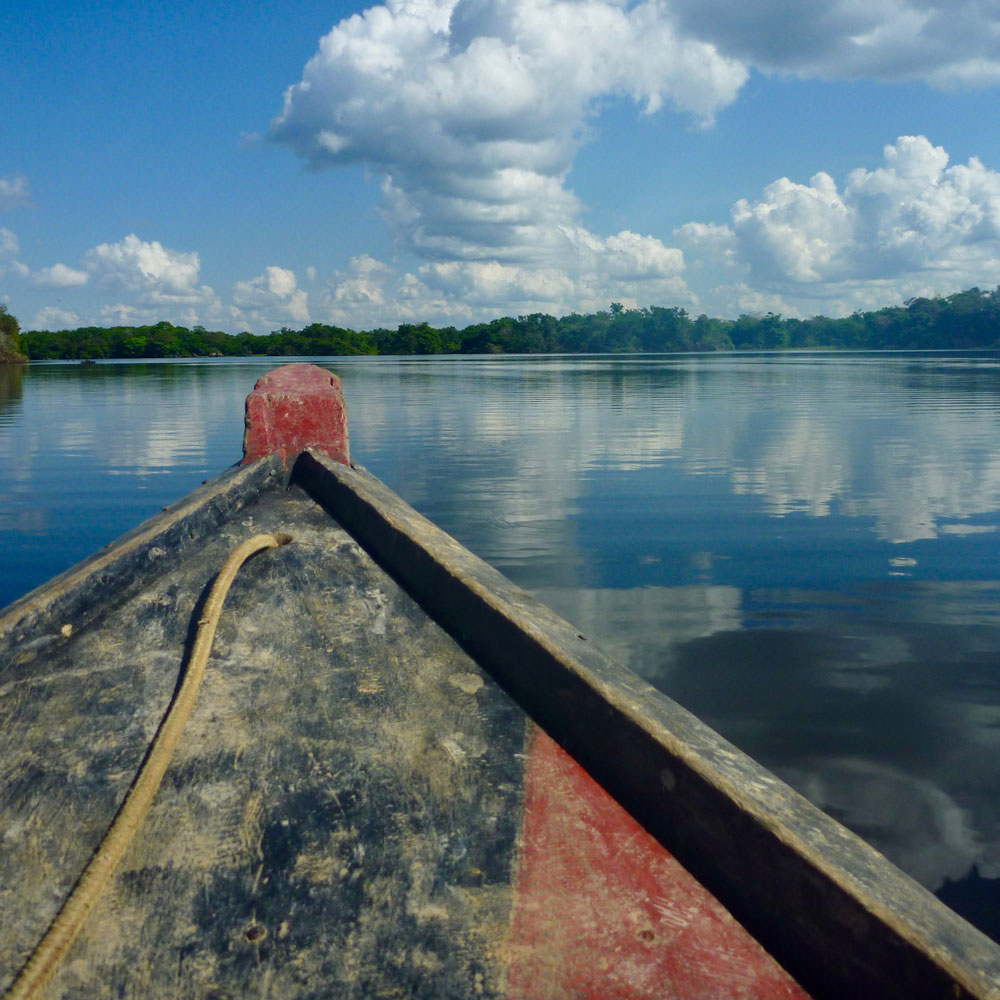
Protecting "The heartbeat of the Amazon"
November 1, 2017
Steve Orlando
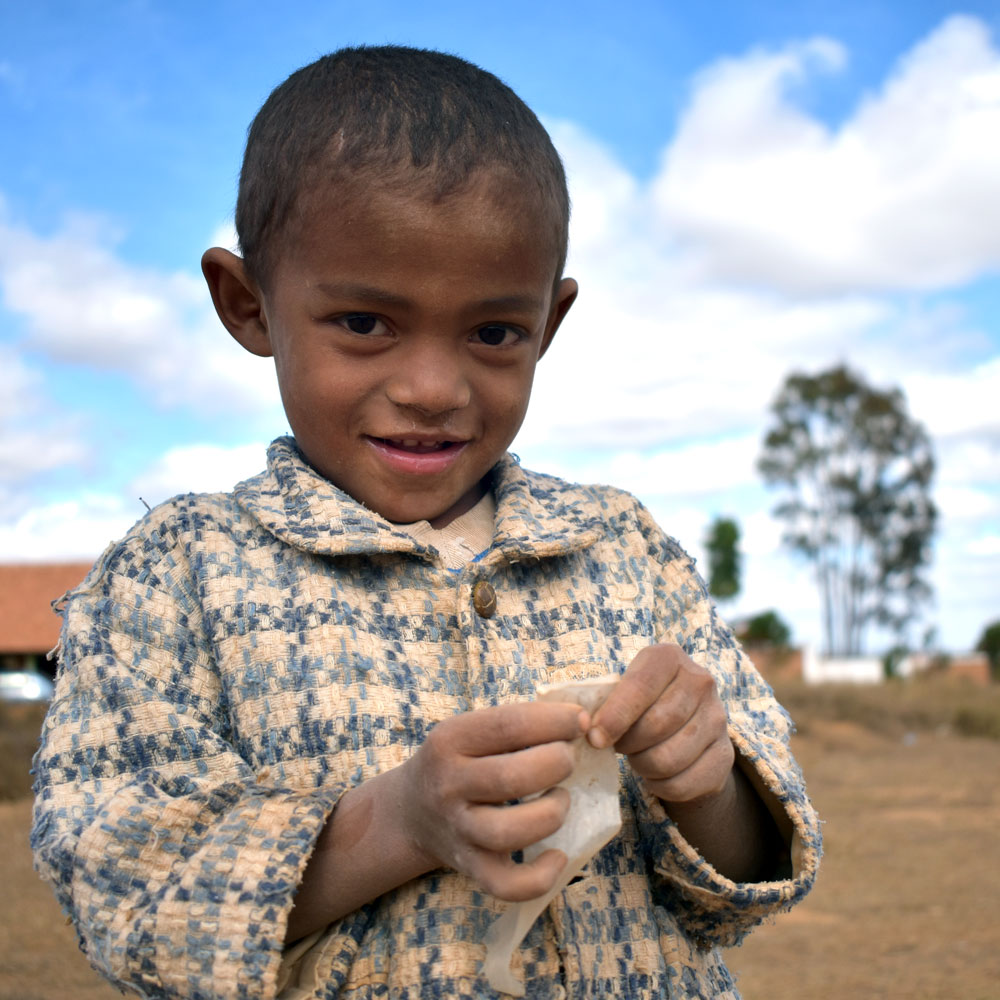
Photo contest celebrates International Education Week
November 2, 2017
UF News
In celebration of International Education Week Nov. 13-17, the University of Florida International Center has announced the winning photos in this year's Global Culture Photography Contest.
See the winning photos in Grinter Gallery Nov. 6–Jan. 2, or on the UF News Facebook page.
Campus Life
Breast cancer is a family experience
November 3, 2017
College of Journalism and Communications
Since graduate school, Carla Fisher has been on a quest to help mothers and daughters better communicate about breast cancer and its risks, as well as integrate communication science into clinical practice. The University of Florida advertising professor believes that treating cancer as a family experience will improve the health of the patient and potentially protect other women at risk.
Full story: https://www.jou.ufl.edu/insights/breast-cancer-communication/
Science & Wellness
Celebrating 100 years of citrus research and education
November 7, 2017
Brad Buck
Oranges, grapefruit, tangerines and limes. Most people think of these as signature plants of Florida, but scientists have traced their origins back millions of years and across continental land masses, said Fred Gmitter, a professor of horticultural sciences with the University of Florida's Institute of Food and Agricultural Sciences.
Scientists can describe the evolutionary paths of your favorite citrus, from prehistoric times until now, said Gmitter, who will serve as the keynote speaker as the UF/IFAS Citrus Research and Education Center celebrates its 100th anniversary, Nov. 29.
“The genome sequencing revolution has impacted nearly every field of biological science, including human health, biodiversity and certainly citrus science,” Gmitter said. “Using tools first developed to understand our own genetic code, we can define not only the steps in the evolution and diversification of the many citrus species, but also the critical factors that led our ancestors to domesticate citrus.”
Gmitter will serve as one of the speakers as CREC celebrates its 100-year anniversary at the facility at 700 Experiment Station Road, Lake Alfred, Florida. Others who will speak include Kent Fuchs, UF president; Jack Payne, UF senior vice president for agriculture and natural resources, and Michael Rogers, director of the Citrus REC.
Activities are scheduled to begin at 9 a.m. and run through 3:30 p.m., with lunch included. To register for the commemorative ceremony and afternoon field trips, click on https://crec100years.eventbrite.com or call 863-956-8632.
“Growers and other citrus industry partners routinely hear presentations from UF/IFAS faculty about the latest research developments in the race to find a cure for greening,” Rogers said. “During the afternoon portion of the CREC 100th celebration, growers get to see first-hand the work they have heard so much about as that research comes alive when we open up the center for lab tours and visits to our grove research sites.”
The day will include trips to CREC’s laboratories and fields where UF/IFAS scientists work on solutions to Florida’s citrus issues.
Those researchers include Nian Wang, UF/IFAS associate professor of microbiology and cell science, who will talk to the public about his work on genetically editing citrus to make for more disease-resistant cultivars.
People also can listen to Gmitter and Jude Grosser, a professor of horticultural sciences, speak about how they use genetics to breed the best citrus cultivars and rootstocks. Participants can also taste samples of some of the finest citrus UF/IFAS has to offer, Gmitter said.
Kirsten Stelinski, a UF/IFAS associate professor of entomology, will introduce participants to the world of the Asian citrus psyllid, which can transmit the deadly citrus greening disease. She and her research team also will inject psyllids to show how to manipulate their bacteria.
Entomology associate professor Lukasz Stelinski plans to hold an open house in his lab that will showcase his recent work. He, too, will focus on managing the Asian citrus psyllid, which can transmit the greening disease to citrus trees, possibly killing them.
Arnold Schumann, a UF/IFAS professor of soil and water sciences, will guide a tour in which guests will visit the 1-acre Citrus Under Protective Screen (CUPS) research facility. The facility is designed to grow high-quality, disease-free, fresh fruit by excluding psyllids, citrus greening and other pests and diseases, Schumann said. Weather permitting, Schumann also will demonstrate a robotic drone sprayer used in the CUPS. But due to quarantine protocols, visitors will not be taken inside the CUPS.
Science & WellnessNational group praises UF innovative sustainability program
November 7, 2017
Allison Vitt
The University of Florida has been highlighted in the 2017 Sustainable Campus Index in the Air and Climate section for its efforts in advancing sustainability in higher education. The 2017 Sustainable Campus Index, a publication of the Association for the Advancement of Sustainability in Higher Education (AASHE), highlights innovative and high-impact initiatives from colleges and universities that submitted a Sustainability Tracking, Assessment & Rating System (STARS) report in the 12 months prior to July 1, 2016.
UF was recognized for its development and implementation of the Neutral UF Coalition, a program that allows faculty and staff employees to voluntarily offset the carbon impact of their commutes to and from campus. Commuting employees may enroll in voluntary post-tax payroll deductions to offset their commute through a local non-profit offset partner, We Are Neutral. 100% of the voluntary deduction amount goes toward offsets, which fund tree plantings on local conservation land and provide energy retrofits in low-income housing in the local community. Just one dollar per pay period ($26 a year for 12-month employees) can completely offset the average UF employee’s commute.
“University of Florida’s feature in this report shows its significant leadership and commitment to advance sustainability,” said AASHE’s Executive Director Meghan Fay Zahniser. “We are excited to recognize UF for working to secure a thriving, equitable and ecologically healthy world through its comprehensive sustainability efforts.”
The Neutral UF Coalition is one way the university is working toward its goal of carbon neutrality. Other recent efforts include a goal to transition ten percent of the campus’s fleet vehicles to electric vehicles within ten years. This challenge was presented to the campus community in 2015 by Senior Vice President and Chief Operating Officer Charlie Lane. In October 2017, Lane announced an incentive program that would offset the cost difference between a traditional gas-powered vehicle and an electric vehicle for departments or units looking to make the switch. UF currently has a fleet of about 1,600 vehicles.
University of Florida’s STARS report is publicly available on the STARS website: https://stars.aashe.org/institutions/university-of-florida-fl/report/2017-06-30/
About STARS
The Sustainability Tracking, Assessment & Rating System (STARS) is a transparent, self-reporting framework for colleges and universities to measure their sustainability performance. STARS was developed by AASHE with broad participation from the higher education community. The credits included in STARS span the breadth of higher education sustainability and are organized into four categories: Academics, Engagement, Operations, and Planning & Administration. All reports are publicly accessible on the STARS website. For more information, visit stars.aashe.org.
About the Association for the Advancement of Sustainability in Higher Education (AASHE)
AASHE empowers higher education faculty, staff and students to be effective change agents and drivers of sustainability innovation. AASHE enables members to translate information into action by offering essential resources and professional development to a diverse, engaged community of sustainability leaders. We work with and for higher education to ensure that our world’s future leaders are motivated and equipped to solve sustainability challenges. For more information, visit www.aashe.org.
Campus Life
Study sheds light on snake mystery
November 13, 2017
UF News
A new study by UF researchers, published in the Journal of Zoology, sheds light on the survival of the snakes of Seahorse Key after the collapse of their symbiotic relationship with the island's birds.
Science & Wellness
Virtual reality for social good
November 13, 2017
Alisson Clark and Cecilia Mazanec

Researchers find pathological signs of Alzheimer’s in dolphins, whose brains are much like humans’
November 14, 2017
Maria Carolina Gallego-Iradi and David Borchelt
Two UF researchers who have found evidence that the same brain pathologies in dolphins are present in the brains of humans who have died with Alzheimer’s disease discuss what their studies suggest for a possible cure.

Maria Carolina Gallego-Iradi, University of Florida and David Borchelt, University of Florida
A team of scientists in the United Kingdom and the U.S. recently reported the discovery of pathological signs of Alzheimer’s disease in dolphins, animals whose brains are similar in many ways to those of humans.
This is the first time that these signs – neurofibrillary tangles and two kinds of protein clusters called plaques – have been discovered together in marine mammals. As neuroscience researchers, we believe this discovery has added significance because of the similarities between dolphin brains and human brains.
The new finding in dolphins supports the research team’s hypothesis that two factors conspire to raise the risk of developing Alzheimer’s disease in dolphins.
Those factors are: longevity with a long post-fertility life span – that is, a species living, on average, many years after the child-bearing years are over – and insulin signaling.
Gallego-Iradi, one of the authors of the paper, began the study on the dolphins’ brains more than a decade ago on the shores of Spain. It took several more years for other researchers to establish the connection between metabolic dysfunction and insulin resistance in dolphins and humans. This recent study also did that.
Together, the insight into the similarities between dolphins and humans has led us to hypothesize that Alzheimer’s and diabetes are diseases not of old age but of a long post-fertility life span.
A disastrous disease
Alzheimer’s is a progressive brain disease that leads to memory loss and changes in cognitive ability. There is no cure, and the disease ultimately leads to death.
It is hard to overstate the burden of the disease, both on those who are diagnosed with it and their families. It is the sixth-leading cause of death in the U.S. Deaths from the disease in the U.S. rose 55 percent from 1999 to 2014.
Alzheimer’s disease has two major pathological hallmarks: The development of clusters of a protein called beta-amyloid outside the cells and tangles of another protein called tau inside the cell.
The protein clusters outside the cells are called senile plaques. The tangles inside are called neurofibrillary tangles.
We saw both of these in the brains of the deceased dolphins.
The big brain theory
Dolphins belong to an order of mammals called cetaceans that have adapted to live in the water.
Although dolphins live in water and humans live on Earth, dolphins and humans are very much alike in some key ways. In the last 50-60 million years, the brains of dolphins and other cetaceans, including porpoises and whales, have hyperexpanded. So have human brains. This is a process called enchephalization.
Also, as do humans, dolphins have a highly evolved brain development and a very complex social relationship. This brain similarity with humans suggests the possibility that dolphins, as humans, have developed similar molecular machineries and pathological characteristics, including similar neurodegenerative diseases.
And, cetaceans and humans live long. This is important, as longevity is one of the most relevant factors in neurodegenerative diseases. Cetaceans have longevity ranges between 20-100 years, which is enough time to develop brain amyloid deposits.
Some aspects of Alzheimer’s pathology have been reported in a wide range of other animals. Our evolutionary relatives, such as apes and monkeys, and our pets, dogs and cats, develop one of the pathologies, the amyloid pathology. Amyloid plaques also have been described in captive wild animals such as bears.
But to see both plaques and tangles in another species is rare.
We believe this makes our findings in dolphins of both neuritic plaque and tangle pathology in dolphins all the more remarkable.
Stranded dolphins led to the first discovery
Cetaceans become stranded many times each year all over the world. This stranding generates alarm, and scientists study to understand why it happens. Some of the factors include poor water quality; animals living in very deep water who detect the shore too late; unbalance and confusion created by Earth’s magnetic field changes; contamination by heavy metals such as mercury, cadmium or zinc; or contamination by compounds such as PCBs and DDTs. Other possible causes are viruses and parasites, traumatic death, predation or fishing mutilation, or ship sonars interfering with animal echolocation.
Dolphins stranded in Spain between 2003 and 2006 led to Gallego Iradi’s findings about the Alzheimer’s pathology.
The samples represented three different species of dolphins (bottlenose, striped and Risso’s) stranded on the coasts of Spain. Their brains all had the same twisted strands and protein clusters in their brain as human patients with Alzheimer’s disease. They also had neuronal loss, strengthening the idea that dolphins and humans could have the same Alzheimer’s pathology.
Years after those findings, other scientists began to explore a possible connection between a failure in insulin signaling and Alzheimer’s.
Humans, at some point in our evolutionary history, acquired a trait along the insulin signaling pathway. They do not imply that insulin signaling affects only longevity, that the effects of insulin signaling on metabolism, longevity and dementia are necessarily mediated through a single mechanism and even that defects in insulin-like growth factor signaling inevitably result in dementia.
Dr. Simon Lovestone at the University of Oxford and Dr. Frank Gunn-Moore at the University of Saint Andrews began to develop a hypothesis that this failure in insulin signaling in humans, related to post-fertility longevity, could be a cause of Alzheimer’s in humans.
And here’s another connection.
Cetaceans are uniquely prone to a prediabetes state and are one of the few animals, other than humans, with a naturally long post-fertility life span.
![]() We postulated a linked mechanism that led us to hypothesize that animals with a long post-fertility lifespan would be at risk for both insulin resistance and Alzheimer’s. This hypothesis led us to the prediction that cetaceans and other animals with unusual longevity would be at risk for both insulin resistance and would have Alzheimers’ pathology – a prediction for which we have provided some proof in our recent article.
We postulated a linked mechanism that led us to hypothesize that animals with a long post-fertility lifespan would be at risk for both insulin resistance and Alzheimer’s. This hypothesis led us to the prediction that cetaceans and other animals with unusual longevity would be at risk for both insulin resistance and would have Alzheimers’ pathology – a prediction for which we have provided some proof in our recent article.
Maria Carolina Gallego-Iradi, Assistant Scientist, University of Florida and David Borchelt, Professor, Neuroscience, University of Florida
This article was originally published on The Conversation. Read the original article.
Science & Wellness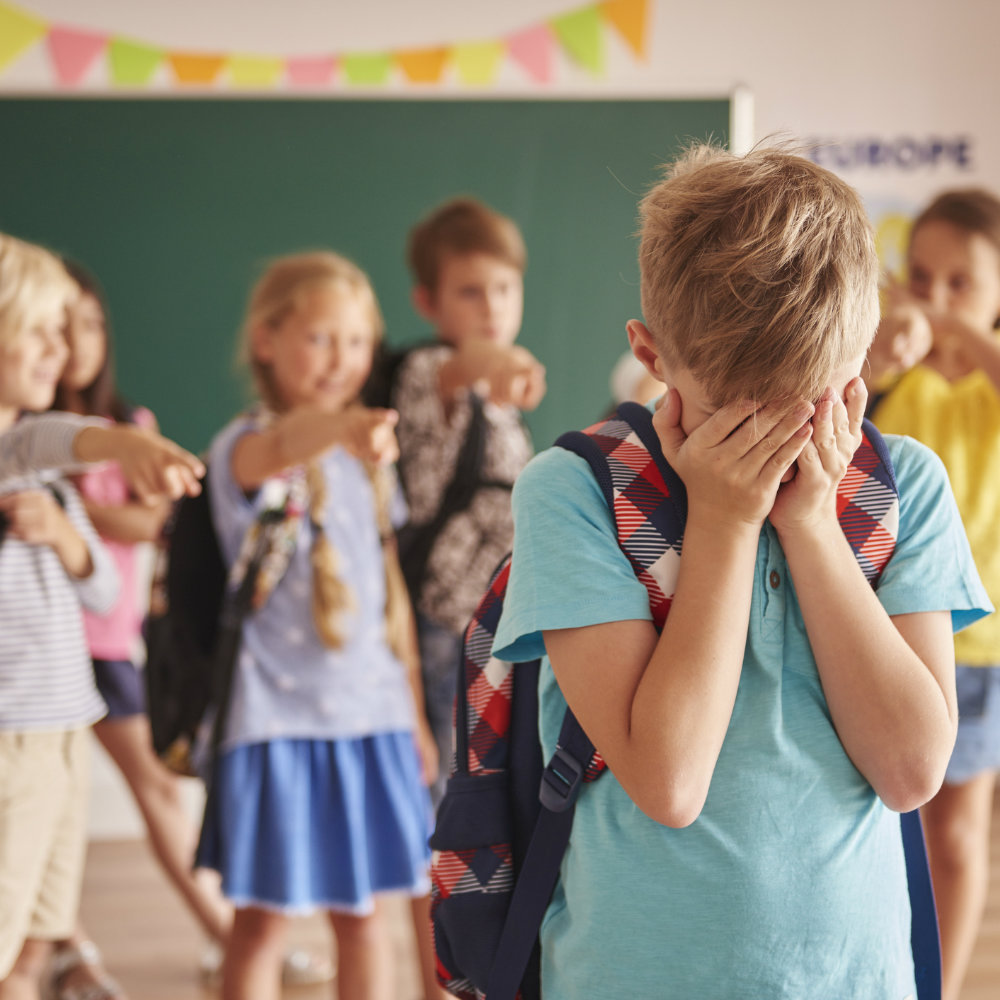
Justice in the age of locker-room talk
November 15, 2017
Rachel Wayne
National Institute for Justice funds psychology professor’s work to prevent bullying and sexual assault
“Boys will be boys” and “sticks and stones” don’t fly with Dorothy Espelage.
The University of Florida psychology professor and expert on bullying, sexual harassment and violence in schools knows the truth: “Not all bullies are rejected outcasts; many bully not just because they can, but also because they want to,” she said, “so, why are we not moving forward on bullying?”
For her part, Espelage is garnering national support to implement anti-bullying programs that work. Most recently, she is the principal investigator of a $1 million National Institute of Justice-funded project to implement a 36-month pilot anti-violence program for school resource officers in Miami-Dade County Public Schools, in collaboration with UF’s Lastinger Center for Learning. The program incorporates contemporary research in child development, bullying and intervention techniques to offer a culturally competent, restorative approach to youth violence.
Previous approaches, such as zero-tolerance and penal policies, have not been backed up by research. Moreover, anti-bullying law has been in place in some states since 1999, yet bullying, and especially cyberbullying, have shown no signs of abating.
As a psychologist, Espelage studies bullying in the contexts of adolescent social navigation and school politics of gender, sexuality, and ethnicity. She works on program development, not legislation, and she concurs with other bullying experts that zero-tolerance policies are ineffective and also disproportionately affect minorities. “Let’s focus on prevention, not reaction,” she said.
“[The approach] I publish quite a bit on is a social-emotional learning program that teaches kids effective communication,” she said.
Embracing prevention rather than reaction requires an emphasis on program development rather than lobbying, as well as an acknowledgement that bullies aren’t just “kids being kids” and that there is a verifiable social–emotional environment in which some youth behave badly — and with a purpose.
“My findings suggest that bullies are often motivated by sexist and homophobic attitudes,” she said.
With funding from the Centers for Disease Control and Prevention and the National Institute of Justice, Espelage conducted a six-year longitudinal study in Illinois middle and high schools that examined risk factors for bullying and discovered an intersection with sexual and dating violence. Her research shows that bullying is a predictor of sexual harassment and teen dating violence and that dismissive attitudes of sexual harassment are linked back to bullying. This correlation suggests that such behaviors are not really isolated to the schoolyard; they connect to more severe incidents of violence in the adult world. Research has shown that perpetrators of domestic violence often were bullies in grade school.
Bullies do so because they can and want to; the same is true for sexual aggressors. In light of recent news about politicians and entertainers engaging in abusive and bullying behavior, a similar apologism emerges to those heard when youth bring forward complaints.
“That’s just hormonal,” “she shouldn’t have dressed that way if she didn’t want attention,” or “it’s not that big a deal.” These attitudes start at a younger age than many adults would like to admit.
Although sexual assault is rare among middle-schoolers, sexual harassment (e.g., unwanted sexual commentary, sexual rumor spreading) stems from bullying and attitudes dismissive of harassment develop at that age, which is why Espelage’s lab has developed an intervention program for that age group. “If we do not intervene at an early age, we miss a crucial opportunity to discourage both bullying and sexual harassment,” said Espelage. “And with each step to stop bullying, we make a step towards stopping sexual harassment.”
It’s not just students who suffer.
In 2014, Espelage co-authored a paper analyzing survey data from an American Psychological Association study of more than 3,400 teachers and found that a vast majority of teachers endured harassment or bullying, especially based upon the teacher’s race, ethnicity, or gender. “That laundry list of psychological and demographic factors should make it clear that a one-size-fits-all ‘zero tolerance’ approach does not work,” said Espelage. However, teachers are often vilified in news articles about bullying, especially cases that resulted in suicide. While the bully is cast as a disturbed individual and the victim a martyr, the teacher is portrayed as a somewhat more insidious character: the uninterested or oblivious bystander who ignored pleas for help. In reality, it’s not so black and white, said Espelage.
For example, many bullies are also victims of bullying. Espelage and her colleagues in the Lastinger Center are complementing the “trauma-informed” approach already used in Miami-Dade County Public Schools to better respond to violent incidents with the “Restorative Problem Solving” framework. This approach encourages dialogue among all parties rather than relying upon a juvenile justice or delinquency system, which research has shown to disproportionately punish students in marginalized groups.
Such social-emotional learning programs are a key part of Espelage’s activities and outreach. Bullying and harassment do not occur in a vacuum, Espelage said. Bullies are not merely unhappy kids who lash out at others, nor vicious predators who are beyond help. By examining and, perhaps, disrupting the bullying environment, anti-violence programs can actually produce results. The politically motivated “bully police” legislation, she said, does not.
Society & Culture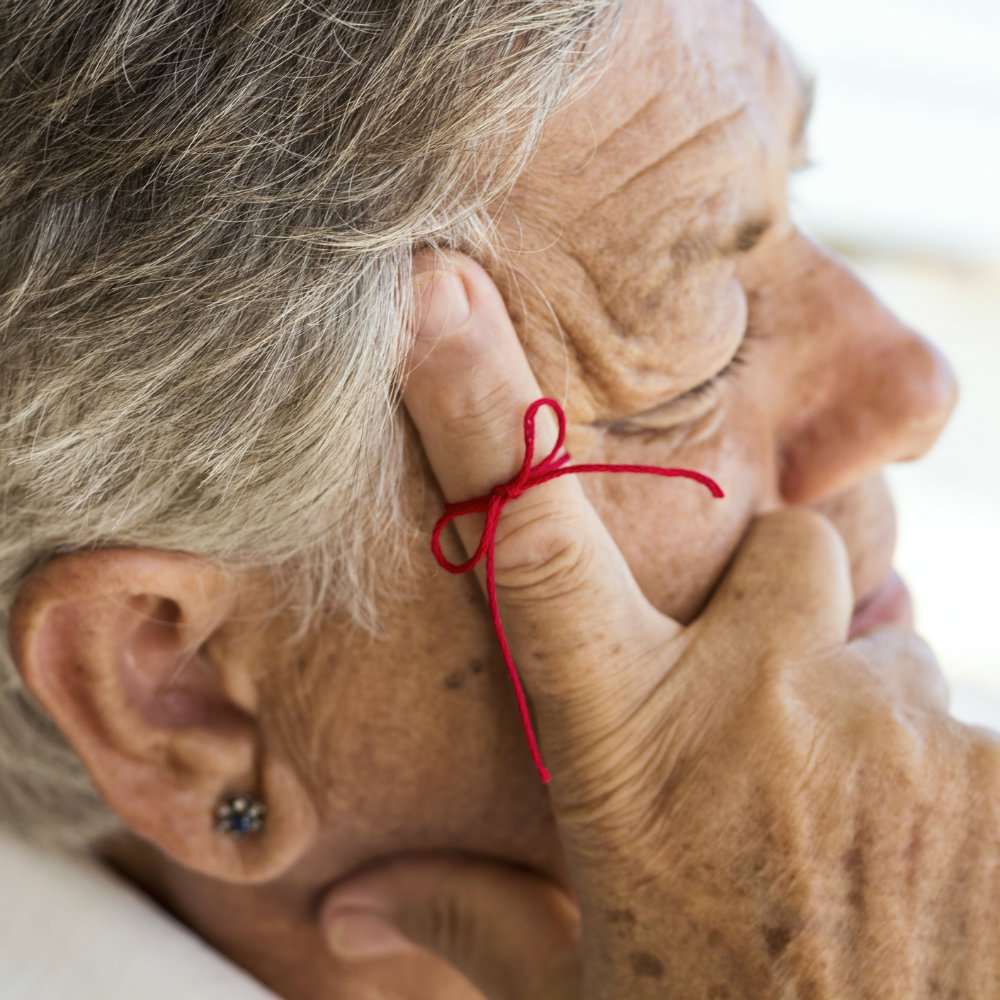
The two obstacles that are holding back Alzheimer’s research
November 21, 2017
Todd Golde
The director of UF’s Evelyn F. and William L. McKnight Brain Institute explains that while advances have been made in Alzheimer’s research, more could be accomplished if patent law didn’t discourage investment in long-term financial trials.
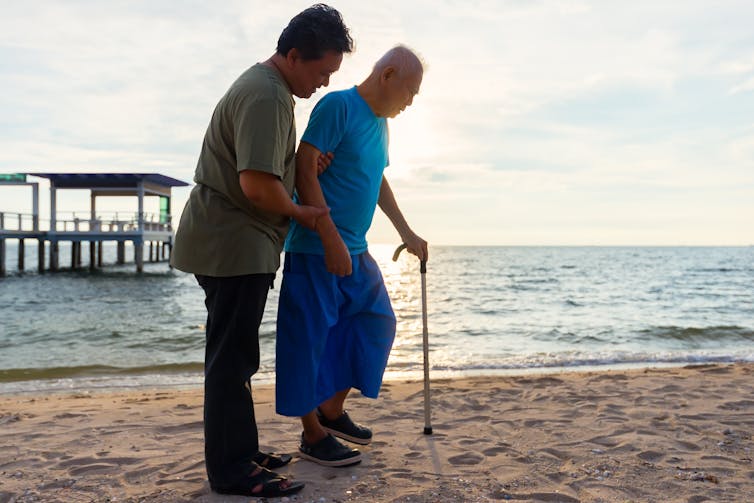
Todd Golde, University of Florida
Thirty years ago, scientists began to unlock the mysteries regarding the cause of Alzheimer’s disease. This knowledge ushered in an era of great enthusiasm that scientists could develop new therapies to either prevent Alzheimer’s or significantly slow the symptoms once present.
Despite continued progress and renewed hope that some therapies now in human trials will modify the course of the disease, the initial optimism of neuroscientists like me has been significantly tempered by reality. Numerous therapies, most with sound scientific basis, have been tested and shown to be ineffective in humans with symptomatic Alzheimer’s disease.
Like the war on cancer, the war on Alzheimer’s disease is not going to be won in a single glorious “battle.” Instead, I believe incremental yet transformative progress will eventually lead to success. Unlike cancer, the scientific community does not yet have any “survivor stories” to buoy our efforts, and it will take a concerted effort by scientists, pharmaceutical companies, government and society to bring about the reality of ending Alzheimer’s disease. Only by recognizing and confronting all of the obstacles impeding development of Alzheimer’s therapies can we be confident that our battle will be successful.
As a physician-scientist and director of the University of Florida’s McKnight Brain Institute who began studying Alzheimer’s disease in medical school in the late 1980s, I appreciate the scope of the scientific advances we have collectively made. I have also come to the sobering realization that translating these advances into real therapies that will make a difference for patients suffering from this devastating disease is an incredibly complex issue which is not all about the science.
There are two significant, nonscientific obstacles – a shortage of funding and patent law – that will require concerted effort by scientists, concerned citizens, society and our lawmakers to overcome.
Funding is improving, but still lagging
Governments of industrialized nations have recognized research funding for Alzheimer’s disease and related dementias is insufficient. This lack of funding is drawing wider notice. Indeed, Bill Gates recently made a public recognition of the need for more funding and pledged US$50 million to Alzheimer’s research.
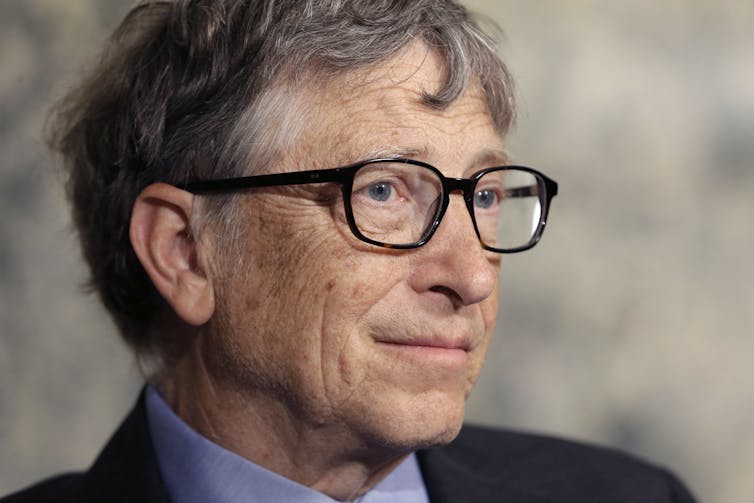
Just within the U.S., National Institute of Health funding has increased in the past five years from $503 million per year to $1.391 billion per year, and an increase of an additional some $400 million is being proposed for 2018.
To many, even $500 million per year may sound like a lot of funds, but given current costs to U.S. society of about $200-$250 billion per year from Alzheimer’s, money spent on research is a drop in the bucket. Furthermore, compared to funding on cancer (about $6 billion per year from the NIH), I believe this additional funding is both appropriate and necessary.
Due to increasing number of Americans living longer lives, Alzheimer’s advocacy groups and others estimate that the number of individuals suffering from dementia may almost triple, from 5 million to 13.5 million.
We are on the right track, but if we can spend $6 billion per year on cancer, we may need to spend that much on dementia to make a difference.
Prevention an important but unrealized goal
One of the challenges in treating the disease is that the brain is riddled with pathology by the time a person shows symptoms of Alzheimer’s. Many research efforts are therefore looking at prevention.
We now know that the pathologies driving the disease – protein deposits called amyloid plaques and neurofibrillay tangles – appear about 20 or more years before overt symptoms of dementia appear.
These gradually accumulate sequentially in the brain, with amyloid preceding abnormal tangle pathology, and tangle pathology seemingly more tightly linked to cognitive decline.
Thus, if we can prevent these deposits with small-molecule drugs, antibodies or even gene therapies, we might prevent Alzheimer’s disease. A number of studies are underway, but no preventative therapies exist.
Though lifestyle interventions such as exercise and “memory-enhancing” mind games are also being investigated as possible ways to stave off or slow down cognitive decline, there is no evidence that these actually alter the underlying pathology and little evidence that they slow the disease course.
I have seen too many people who lived the healthiest lifestyle and stayed intellectually and socially active throughout their lives, yet still developed Alzheimer’s. They are testament to why we need therapies that actually alter the pathobiological process underlying the disease.
A surprise impediment: Patent law
A major, largely unspoken block to testing and developing the best therapies for prevention is the current patent law.
Costs of running defintitive clinical trials necessary to test even a symptomatic therapy can exceed $1 billion, and the costs of prevention trials will far exceed that figure.

Prevention trials are likely to take five to 10 – or more – years before they yield an answer as to whether the drug or intervention is working. Patent protection and market exclusivity may already have expired by the time a drug is approved or have only a few years remaining.
This severely limits the ability for the pharmaceutical sector to invest in Alzheimer’s prevention studies: They cannot justify the cost from a business point of view.
This presents a huge dilemma. Researchers, and those we hope to help, need private-sector investment, but the private sector does not have a clear financial incentive to conduct these studies. Scientists in pharmaceutical companies simply cannot make the business case for risking billions of dollars to develop and test Alzheimer’s prevention therapy that may or may not work, if it would be approved for use only after the patent protecting the therapy has expired. The company would never be able to recoup the development costs.
That’s why our society needs a new financial model for developing preventive therapies that encourage the long-term risky investments required. One model that could be considered would be for regulators to permit market exclusivity even without patent protection for a period of time that enables the company to make a typical return on investment for a “blockbuster” therapy. This could be negotiated on a case-by-case basis with a prespecified formula for the ROI.
Toward a brighter future
Even as we move toward prevention of Alzheimer’s, researchers recognize that we must continue efforts to help those currently suffering from the disease and those likely get the disease before we develop effective preventative measures.
As a field, researchers are learning from our past failures. Our knowledge of the disease is inexorably increasing, and our tools have never been better.
![]() Moreover, the increased funding is attracting new researchers with new ideas that could potentially be the game changers. Because of these advances, I remain optimistic that not only will we prevent Alzheimer’s but we will be able to make a difference for those who will get the disease in the near future. Indeed, working together, we hope to change the lexicon around Alzheimer’s and related dementias from inevitable and untreatable to preventable and treatable.
Moreover, the increased funding is attracting new researchers with new ideas that could potentially be the game changers. Because of these advances, I remain optimistic that not only will we prevent Alzheimer’s but we will be able to make a difference for those who will get the disease in the near future. Indeed, working together, we hope to change the lexicon around Alzheimer’s and related dementias from inevitable and untreatable to preventable and treatable.
Todd Golde, Director, Evelyn F. and William L. McKnight Brain Institute Director, 1Florida Alzheimer’s Disease Research Center, Professor, Department of Neuroscience, College of Medicine University of Florida, University of Florida
This article was originally published on The Conversation. Read the original article.
Science & Wellness
Anniversary of Konrad Reuland tragedy reminds us of the toll of brain aneurysms
November 27, 2017
Brian Hoh
A UF professor of neurosurgery explains how a young athlete in top shape could suddenly develop a deadly condition that typically strikes without warning and proves fatal 50 percent of the time.

Brian Hoh, M.D., University of Florida
The late NFL tight end Konrad Reuland and baseball Hall of Famer Rod Carew became forever linked when Carew, who needed a new heart, received Reuland’s. Reuland suffered a brain aneurysm on Nov. 26, 2016 and died two weeks later. Medical experts and sports historians believed it to be the first heart transplant operation between two major league athletes, and the story of Reuland’s gift and Carew’s recovery touched the hearts of fans across the country.
Reuland’s decision just a few months earlier, as a 20-something who appeared to be the very picture of health, to check the organ-donor box on a driver’s license form, changed not only the course of Carew’s life but those of two other people who received Reuland’s liver and kidney. Carew, who played for the Minnesota Twins and California Angels and ended his career with 3,053 hits, received the other kidney. Carew had suffered a major heart attack in 2015 and had been placed on a waiting list for a heart transplant.
Carew, whose jersey number was 29, did not know at the time of his surgery on Dec. 16, 2016 that he was receiving Reuland’s heart, and Reuland’s family did not know who the recipients of the 29-year-old’s organs would be. Reuland died Dec. 12, 2016.
But Mary Reuland, Konrad’s mother, figured out the connection between Carew and her son a few weeks later. She had read about the lifesaving heart transplant that Carew received four days after Konrad’s death, and several people had asked her if she thought Carew could have been the recipient. Curious, Mary Reuland called the organ donation network, which matched Konrad’s heart to Carew. She learned that her son’s heart was in fact the one that saved Carew’s life. The families met less than three months later, and Mary Reuland listened with a stethoscope to her son’s beating heart inside Carew’s chest.

As a medical professional and sports fan, I was deeply moved by these events. But as a neurosurgeon who specializes in brain aneurysm, I was deeply pained at the news of how Reuland lost his life: Reuland suffered a ruptured brain aneurysm after lifting weights. He had been with his family for Thanksgiving, and they were decorating their home for Christmas. Reuland didn’t live to see the holiday. He had brain surgery in late November to try to repair the burst aneurysm. Just two weeks later, he succumbed in a way all too familiar to me.
There is no evidence that brain aneurysm is related to traumatic brain injury. So how is it, many may wonder, that a young athlete in phenomenal shape could suddenly develop a deadly condition?
From out of the blue
An aneurysm is a weak spot on the wall of an artery.
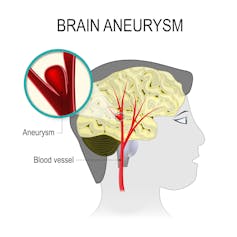
The Brain Aneurysm Foundation estimates that 6 million people, or one in 50, have an unruptured brain aneurysm. Aneurysms can be detected by imaging, but screening imaging is not recommended unless there are symptoms or there is a strong family history of brain aneurysms. Over time, the weak spot expands almost like a water balloon. If it keeps expanding, it will eventually reach a breaking point and burst. The causes are largely unknown. Some may be hereditary.
Aneurysms can form anywhere in the body, but brain aneurysms occur in the blood vessels of the brain, usually at the base. Aneurysms tend to form at branching points where blood vessels diverge.
Brain aneurysms affect young and old, rich and poor, those with a family history of aneurysms and those without.
They typically strike without warning, and 50 percent of the time prove fatal, throwing families into shock and sudden grief. Four out of five people who suffer a brain aneurysm have no family history of it. There is some indication in the research that smoking puts you at higher risk, and that aneurysms disproportionately affect women.
But no one knows for sure what causes brain aneurysms, which affect up to 5 percent of Americans and result in 30,000 cases of ruptured aneurysms each year.
Symptoms of a brain aneurysm include headaches, double vision, vision changes, seizures or other neurological changes.
The real problem occurs when the aneurysm ruptures.
Patients with a ruptured aneurysm experience bleeding in the brain called subarachnoid hemorrhage, which is a type of stroke. Such patients may feel an overpowering “thunderclap” headache. They may die suddenly or be found comatose. When a patient has a ruptured aneurysm, we try to treat it so that it doesn’t rupture again. If it ruptures a second time, there is an 80 percent chance of death.
A devastating disorder
The statistics for this devastating disorder are grim: When a brain aneurysm ruptures, there is a 15 percent chance of death before even getting to a hospital. Of those who survive, there is a 30 to 50 percent chance of permanent disability, ranging from severe brain damage to more mild cognitive difficulties. Many are unable to return to work.
Current research in the field of cerebral aneurysm points to inflammation as a possible cause for aneurysms to arise. Here at the University of Florida, my laboratory is investigating the role inflammation may play in the development of aneurysms.
My laboratory is studying how the dynamics of blood hitting those blood vessel branching points at the base of the brain can cause inflammation. We are examining how inflammation causes weakening of a blood vessel, which we believe causes the aneurysm to develop.
We are also studying different types of inflammatory cells that cause aneurysms to rupture, so that we may work toward a goal of developing a drug treatment to fight those inflammatory cells. We are studying cytokines, or molecules that send signals, control the activities of cells and recruit those inflammatory cells to the weak part of the blood vessel. We are investigating ways to treat aneurysms by turning inflammation on or off.
While my team vigorously pursues that work in the lab, here is what I see at the hospital: patients who come in with “the worst headache of my life” – who literally had no foreshadowing of what was to come. In those cases, the aneurysm may have already ruptured.
Patients diagnosed with an unruptured aneurysm often learn of it incidentally. Maybe they came in for double vision or headaches. Maybe it was cranial nerve palsy, or, in rare cases, a seizure.
Patients with an aneurysm may undergo surgery. This involves opening the skull and pinching off the aneurysm with a metal clip. Or they may receive endovascular treatment, in which I thread a small tube through an artery in the leg all the way up to the brain to fill the inside of the aneurysm with soft packing wires called coils or place a stent, a metal mesh tube.
Every day, I see the devastating consequences of this mysterious and tragic condition.
It not only affects individuals. It affects families. It affects communities.
![]() My goal is to identify the cause – and to pursue preventative and therapeutic treatments.
My goal is to identify the cause – and to pursue preventative and therapeutic treatments.
Brian Hoh, M.D., Professor of Neurosurgery, University of Florida
This article was originally published on The Conversation. Read the original article.
Science & Wellness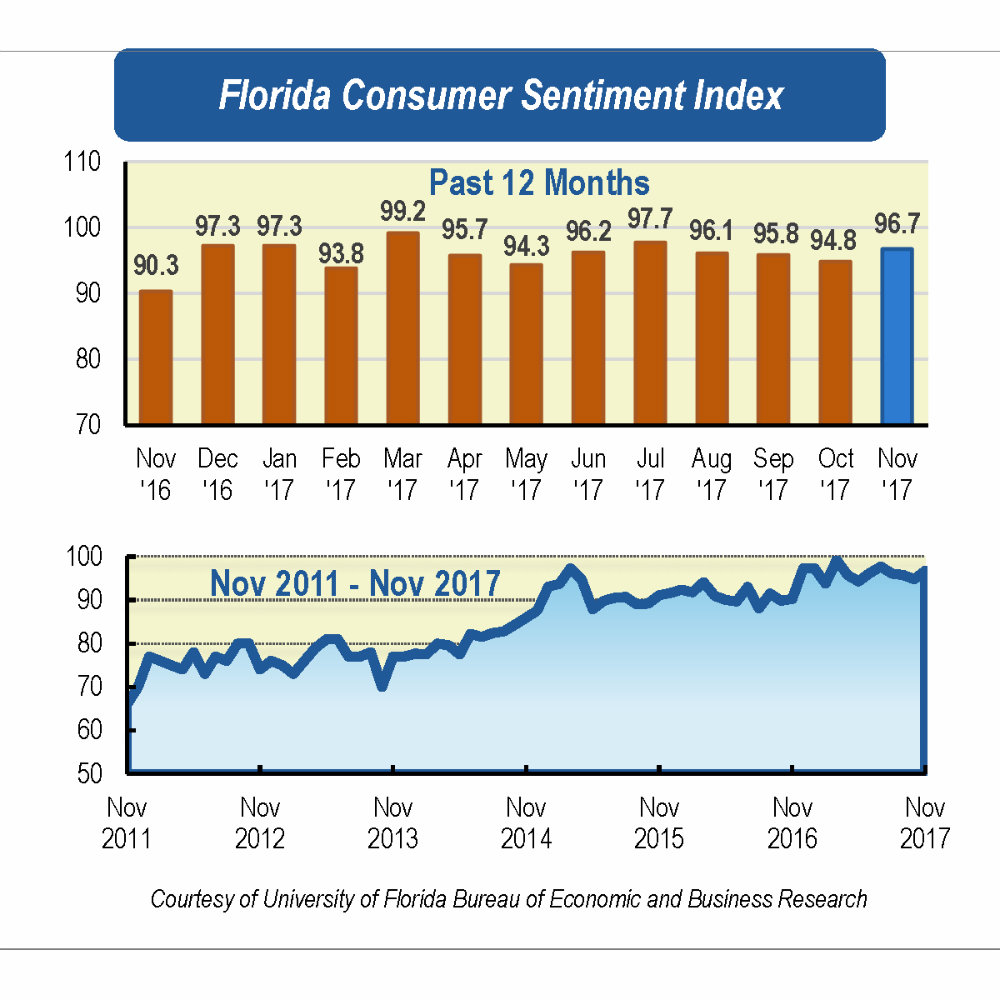
Rosy outlook on future economic conditions pushes Florida consumer sentiment index up in November
November 28, 2017
Colleen Porter
After three months of consecutive declines, consumer sentiment among Floridians rose to 96.7 in November, up 1.9 points from October’s revised figure of 94.8, according to the latest University of Florida consumer survey.
Consumer sentiment in Florida started 2017 with a record-breaking figure and reached its highest level in 15 years during the first half of the year. Despite downturns in the second half of the year, the index is now half a point higher than the current year’s average as 2017 draws to a close.
Among the five components that make up the index, four increased and one decreased in November.
Perceptions of one’s personal financial situation now compared with a year ago rose 2.2 points, from 86.5 to 88.7. However, opinions as to whether now is a good time to buy a big-ticket household item like an appliance dropped eight-tenths of a point, from 102.7 to 101.9. Readings varied across demographic groups without a clear pattern.
“Despite one reading going up and the other down this month, the perceptions of current economic conditions among Floridians have remained positive and stable during 2017,” said Hector H. Sandoval, director of the Economic Analysis Program at UF’s Bureau of Economic and Business Research.
Expectations of personal finances a year from now ticked up 1.2 points to 105.4. Anticipated U.S. economic conditions over the next year showed the greatest increase, up 4.6 points from 91.5 to 96.1. Expectations of U.S. economic conditions over the next five years increased 2.3 points from 89.1 to 91.4.
“Future expectations improved greatly in this month’s reading. Similar to the perceptions of current economic conditions, they have remained consistent in 2017,” Sandoval said. “Overall, Floridians are more optimistic, and the gain in November’s sentiment came from consumers’ future expectations about the economy in the medium- and long-run. Nonetheless, consumer sentiment has been very favorable over the year.”
Economic indicators in Florida have remained largely positive, and the prospects for 2018 appear good. Since the beginning of the year, Florida’s labor market has strengthened, with solid job gains statewide every month. Between January and October, the Florida unemployment rate declined by 1.4 percentage points, from 5 to 3.6 percent, reaching the lowest rate in the past 10 years.
Also, Florida’s gross domestic product increased 3.6 percent in the second quarter of 2017, according to the U.S. Bureau of Economic Analysis. The leading contributors to economic growth in Florida include professional, scientific, and technical services, the real estate and leasing sector, and retail trade.
“The favorable local economic conditions and positive trends on the labor market, combined with the positive expectations about the U.S. economy in the short and long run will have a positive impact on Florida’s economy in the beginning of next year,” Sandoval said.
Conducted Nov. 1-20, the UF study reflects the responses of 482 individuals who were reached on cellphones, representing a demographic cross section of Florida.
The index used by UF researchers is benchmarked to 1966, which means a value of 100 represents the same level of confidence for that year. The lowest index possible is a 2, the highest is 150.
Details of this month’s survey can be found at http://www.bebr.ufl.edu/csi-data
Society & Culture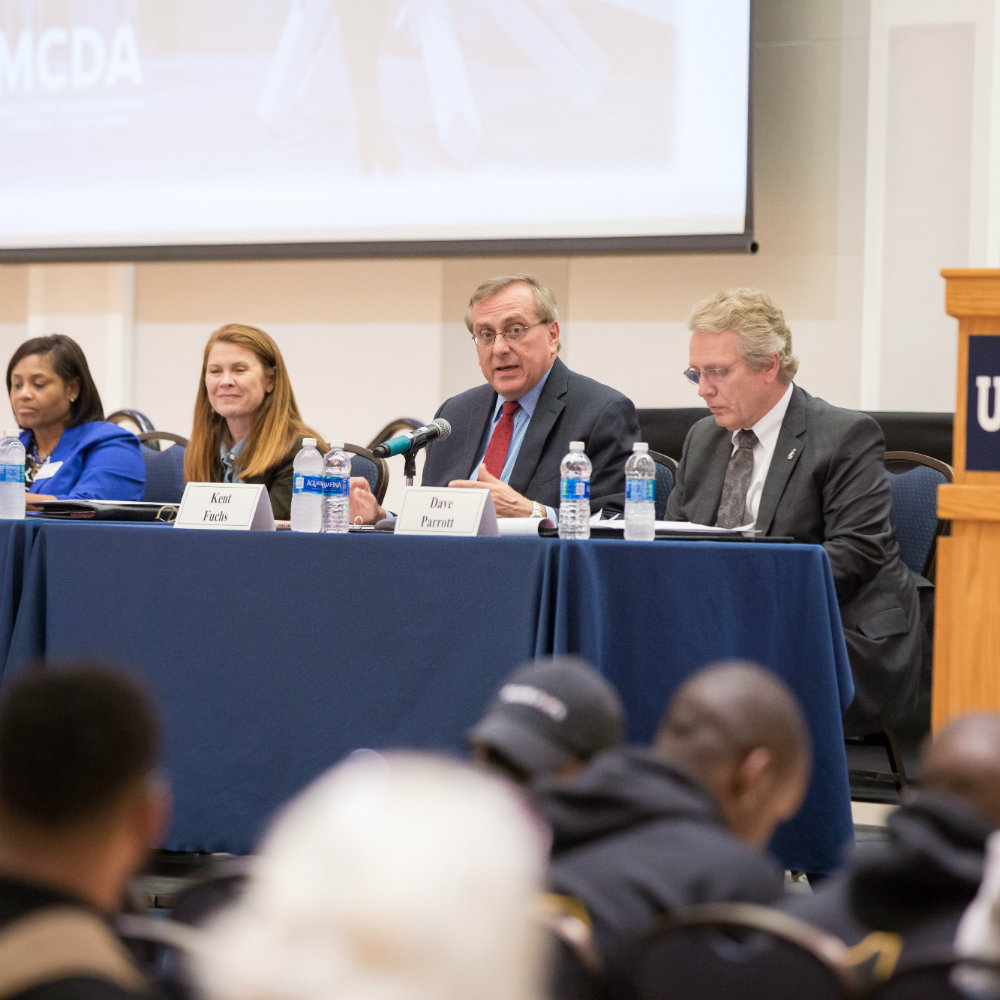
UF administrators and students hold open dialogue on diversity at campus town hall
November 29, 2017
Shamarria Morrison
Students of diverse populations want the University of Florida to continue an open dialogue with them to address change at UF.
“I know everyone’s questions were kind of targeting administration to do better, but they are working on it. They are really considering how we feel,” said Ernest Godinez, third year African-American Studies student. “That’s great to hear that, and feel that,” said Godinez following the University of Florida’s Black Student Affairs Task Force and Black Affairs’ town hall meeting at the Reitz Union Rion Ballroom Tuesday night.
More than 70 attended the town hall, organized to give students an opportunity to share their concerns and solutions to improve campus climate with President Kent Fuchs and other administrators. The event also served to provide an update on items discussed in the first town hall, held in March. Returning as moderator was Florida Bridgewater-Alford from University Relations.
“The [administration’s] responses were definitely better,” said Ayinde Leconte, a business major who attended the event held during the spring semester.
Following remarks by Multicultural and Diversity Affairs Executive Director Will Atkins, the four-person panel, UF President Kent Fuchs, VP for Student Affairs Dave Parrot, VP for Human Resources Jodi Gentry, and Interim Director of Freshman and International Admissions Chandra Mitchell, offered updates on diversity and inclusion efforts in their respective areas. 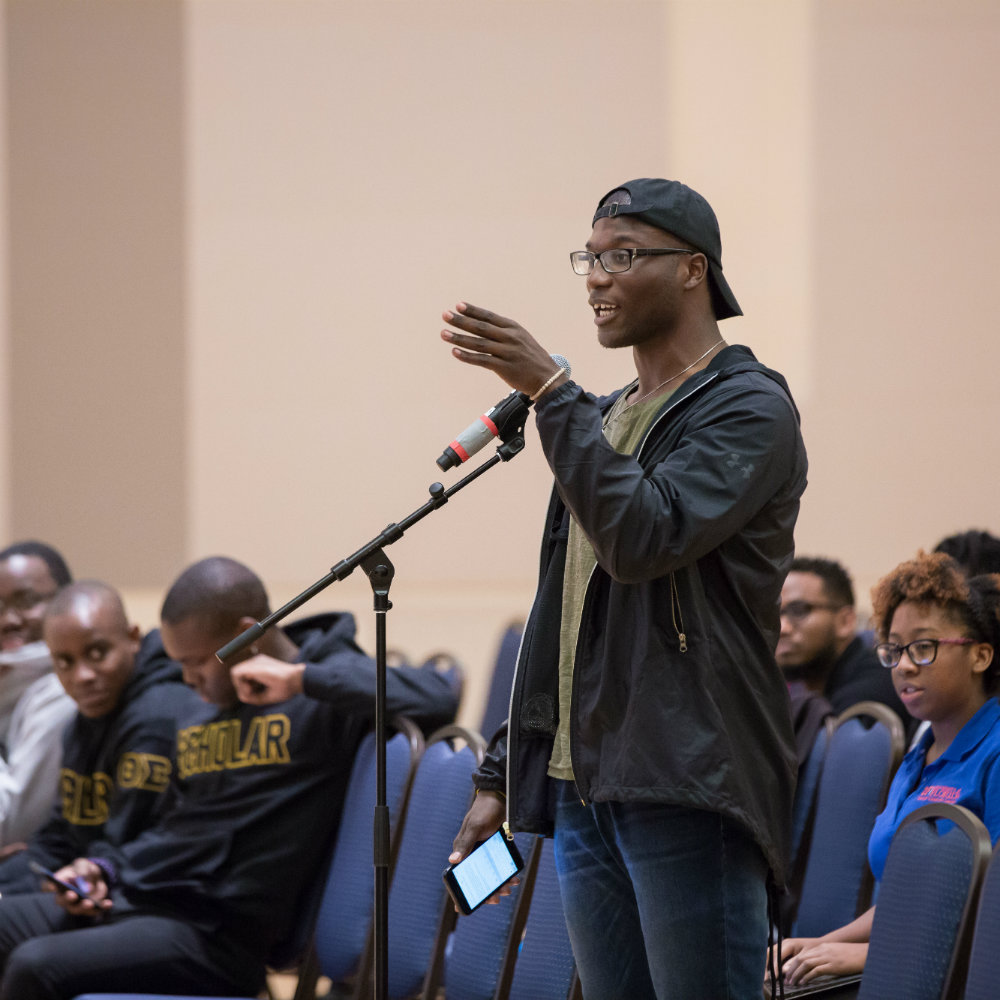
Students then lined up to ask questions and engage in a dialogue with the administrators. The first question of the night focused on UF’s actions after white nationalist group, the National Policy Institute, despite not being invited by anyone at UF, rented out a space on campus in October.
At that event, UF Public Safety reported “minimal acts of violence and only two arrests,” but students say UF shouldn’t rest on that outcome for potential future speakers like Richard Spencer.
“After Spencer, is there any form of protocol that will be set in place if something like this happens again?” Godinez asked the panel.
“We are not going to do, I don’t believe, what some universities have done, and that’s ban anyone from renting space unless they are sponsored by the university,” Fuchs replied. “There might be ways to not make it so easy to come in and utilize our facilities by uninvited people.” The President added that as a public university, he feels strongly that community groups be able to rent out space, such as high school graduations at UF facilities, he added.
Students questioned how current and future students for UF would feel comfortable at UF after events like this.
“What I want to hear is things like the black task force and other sort of similar groups talk about is how we are going to start protecting black students on campus,” asked Daniel Clayton, 5th year electrical engineering major, after the panel spoke. “How are we going to start rebuilding black engagement, outside of those enrolled here?”
Mitchell said that students can serve as ambassadors in their communities and share their experiences about the University of Florida.
One of the university’s first steps to building engagement is hiring a Chief Diversity Officer to the president’s cabinet. The task force announced it as one of nine updates since the first town hall meeting. This person would report directly to the president as an advisor on diversity and inclusion to all departments in the university.
Gentry says UF is looking for someone “who has demonstrated expertise and experience in the area of diversity and inclusive excellence, hopefully already [working] in higher ed.” She said that the role will serve as a senior adviser to the president and would be a “leader of leaders,” adding expertise to existing practices and programs. “We’re not looking for someone to create an area with highly centralized programming, the research does not suggest that is necessarily successful, and we don’t believe that is a good fit for the university. But someone who can help us learn from one another… and serve as a conduit.”
The Office of Admissions reported on its continuing initiatives to recruit more diverse students.
The office is entering its second year utilizing the Coalition for Access, Affordability, and Success consortium application, which Mitchell says “supports students who are lower resourced and underrepresented to help them through the college application process.”
One of the office’s programs, Gator Access, connected admissions personnel with 51 high schools, reaching about 900 students considering college enrollment, Mitchell reported. “Looking at the application numbers from our African- American community, we did receive 500 more in applications,” she said. “You’ll see that over the course of next year.”
The panel also addressed strategies to recruit black faculty and staff at the university. “We put in place our strategic talent group to help with sourcing… so that we can really make sure our applicant pools are diverse as they can be,” said Gentry, of UF Human Resources. “What you want to begin with is a very representative faculty pool.”
A student asked about the problem with retaining faculty and staff at UF, and Gentry said the administration as a whole has acknowledged that there is work to be done to address the climate and culture.
Fuchs says he plans to continue to have these town halls, and perhaps vary the panel members in order to include more voices in the conversation.
“I am looking forward to the spring semester and everything we are trying to implement,” said student Leconte.
To watch an archived webcast from the event, click here.

